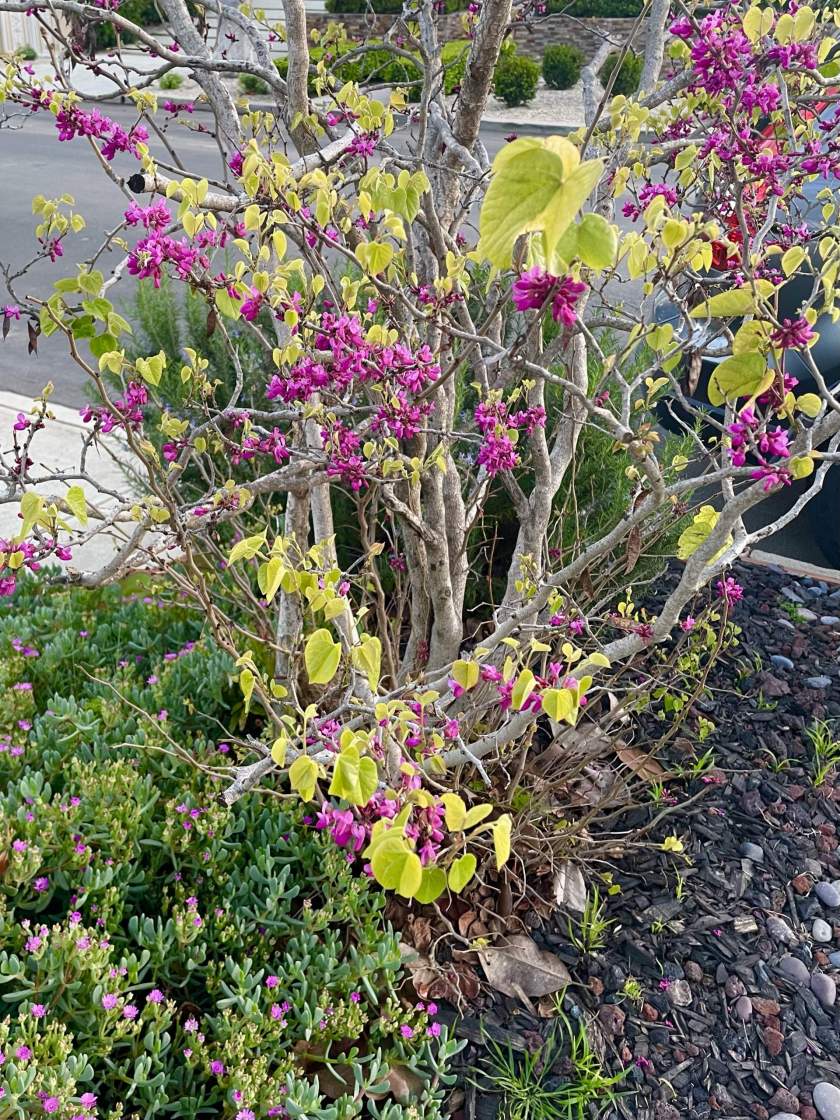Cercis canadensis, commonly known as Eastern Redbud, is a deciduous tree native to eastern North America. It belongs to the Fabaceae family, which is the Legume or Pea Family. This attractive tree is highly valued for its showy purple flowers, heart-shaped leaves, and ornamental seed pods.
In its natural habitat, Cercis canadensis can be found in a variety of environments, including open woodlands, slopes, and forest edges. It thrives in well-drained soils but can adapt to a range of soil types, including clay, loam, and sandy soils. It prefers moderate moisture levels and benefits from regular watering, especially during dry periods.
When it comes to growing Cercis canadensis, it is best suited for USDA hardiness zones 4 to 9. The tree typically reaches a height of 6 to 9 meters (20 to 30 feet) with a spread of 7.5 to 10 meters (25 to 35 feet). It prefers full sun to partial shade conditions for optimal growth and flowering.

How to grow Cercis canadensis:
In terms of care, providing regular water during the establishment phase is crucial. Once established, Eastern Redbud is relatively low-maintenance. Mulching around the base of the tree helps retain soil moisture and suppress weed growth. Pruning, if necessary, should be done during the dormant season to shape the tree or remove dead or damaged branches.
Propagation of Cercis canadensis can be achieved through various methods. The most common techniques include seed propagation, which involves collecting seeds from mature pods and sowing them in well-draining soil. However, it’s worth noting that seed-grown plants may exhibit genetic variability. Another method is hardwood cuttings taken during the dormant season, which can be rooted in a suitable growing medium.
While Eastern Redbud is generally considered a relatively healthy tree, it may be susceptible to some diseases and pests. Cercospora leaf spots, powdery mildew, and cankers caused by various fungi can affect the tree’s foliage and branches. Regular inspections and prompt action can help manage these issues effectively. It’s advisable to consult with local gardening resources or experts for specific information on prevalent diseases and pests in your region.
Cercis canadensis is highly valued for its early spring floral display when it produces clusters of pink or purple pea-like flowers directly on its branches. These vibrant blossoms are not only visually appealing but also attract pollinators like bees and butterflies. In late spring to early summer, the flowers give way to flat, elongated seed pods that persist on the tree, adding visual interest throughout the growing season.
Overall, Cercis canadensis is a beautiful, resilient tree that offers year-round appeal with its flowers, foliage, and seed pods. With proper care, it can thrive in a variety of landscapes, providing shade, beauty, and ecological benefits.





